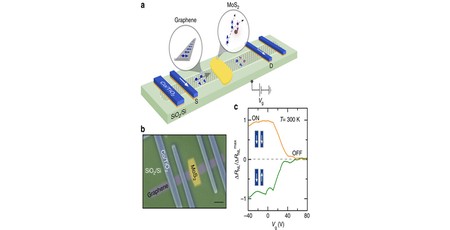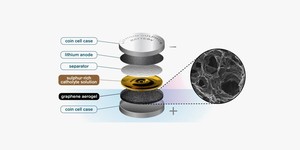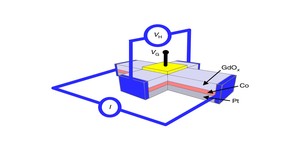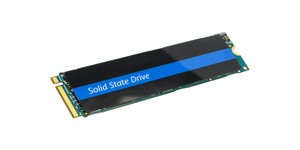Researchers build graphene-based spintronics 'valve'
July 6, 2017 | 12:05
Companies: #chalmers-university

Wonder-material graphene may be one step closer to revolutionising the semiconductor industry according to a team of researchers at Chalmers University of Technology who have figured out a way to 'switch off' its spin.
Graphene, a carbon allotrope formed by creating a sheet of carbon atoms just one atom thick, has been hailed as the material of the future for a wealth of applications. Not least of these applications is the realm of computing: Over the years since its discovery, researchers have gone from the first transistors laid onto a graphene substrate to functional prototypes with switching speeds of 300GHz, have proposed a means of boosting the rate at which electrons flow through copper to the speed of light, used it to create a thermal interface material four times better than copper, made a magnetic variant suitable for storage use, and even made a low-cost graphene ink to reduce production costs.
Sadly, not all has been smooth in the world of graphene exploitation. Although CLBattery was able to bring a graphene-enhanced battery to market in 2012, commercial implementations of the various lab-based benefits of graphene are few and far between. In 2011 IBM warned that graphene was far from a simple drop-in replacement for silicon in semiconductors, while in 2014 concerns were raised about the potential environmental impact of the material following the discovery that the material is extremely mobile in surface water when in graphene oxide form.
Now, though, researchers at Chalmers University of Technology have yet another lab-based graphene breakthrough for the pile: a technology allowing the 'spin' of electrons to be switched on and off, producing a potential transistor-like device for spintronic computing - using the spin of electrons, rather than their absence or presence, to carry information. The team started with research carried out two years ago on the use of graphene to boost the distance over which electronics with coordinated spin could travel and to reduce the rate at which the spin decays. 'It is not enough to have a good motorway for the spin signal to travel on: You also need traffic lights so the signal can be controlled,' explained Associate Professor Saroj Dash, research lead, of his team's project. 'Our new challenge became finding a material that can both convey and control the spin. It is hard, since both tasks normally require completely opposite material properties.'
The solution: molybdenum disulphide (MoS2), a material which can also be made in layers atomically thin but which has exact opposite properties to graphene when it comes to spintronic usage. By layering MoS2 on top of graphene, the team observed something promising: 'Firstly, the magnitude of the spin signal and lifetime in graphene is reduced tenfold just through the close contact with molybdenum disulphide. But, we also show how one can control the signal and lifetime by applying electrical gate voltage across the heterostructure,' explained Dash. In other words, the team had successfully created the spintronics equivalent of a transistor, able to switch between coherent and incoherent electron spin at will.
Dash doesn't call it a transistor, however: 'When researchers proposed future spin transistors, they often imagined something based on semiconductor technology and so-called coherent manipulation of electron spin. What we have done works in a completely different way, but performs a similar switching task,' he clarified of his team's work. 'This is the first time that anyone has been able to demonstrate that the gate control of spin current and spin lifetime works at room temperature – which naturally increases the possibilities for different applications in the future.'
According to Dash, the 'valve' his team has created may one day lead to the creation of computing elements featuring magnetic, semiconducting, and spintronic capabilities - a universal component which would be capable of handling data storage and active processing on demand.
The team's work is published in the journal Nature Communications, volume 8, with a full copy available via the journal's official website. No word on a timeline to commercialisation has been provided.

MSI MPG Velox 100R Chassis Review
October 14 2021 | 15:04








Want to comment? Please log in.